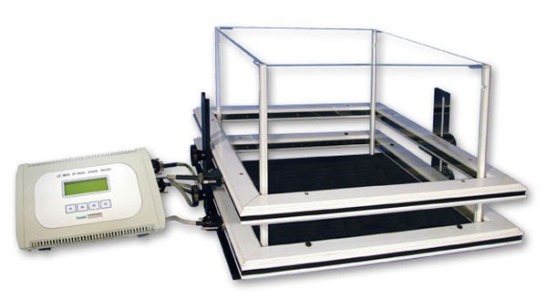Authors
R. Lalonde, C. Strazielle.
Lab
Centre Hospitalier de l'université de Montréal/St-Luc, Unité de Recherche en Sciences Neurologiques, Montréal, Québec, Canada.
Journal
Fundamental and clinical pharmacology
Abstract
Two 5HT(1A) receptor agonists and chlordiazepoxide were examined in open-field, elevated plus maze, and emergence tests. At doses with no effect in the open-field, chlordiazepoxide increased open and open/total arm visits as well as open arm duration in the elevated plus maze, whereas 5HT(1A) receptor agonists showed an anxiolytic response on a single measure. The anxiolytic action of chlordiazepoxide was limited to the less active BALB/c strain. Unlike the 5HT(1A) receptor agonists, chlordiazepoxide was also anxiolytic in the emergence test, once again only in BALB/c and not C57BL/6J mice. Significant correlations were found between emergence latencies and specific indicators of anxiety in the elevated plus-maze in chlordiazepoxide-treated but not in mice treated with buspirone and 8-OH-DPAT. These results indicate that elevated plus-maze and emergence tests depend on benzodiazepine receptors. In contrast, 5HT(1A) receptor agonists were ineffective in the emergence test and no correlation was found between emergence latencies and specific indicators of anxiety in the elevated plus-maze. Though superficially similar, the emergence test seems to tap into a partially separate facet of anxiety.
BIOSEB Instruments Used
Infrared Actimeter (LE8815)
Source :
http://onlinelibrary.wiley.com/doi/10.1111/j.1472-8206.2009.00772.x/abstract

 Douleur - Allodynie/Hyperalgésie Thermique
Douleur - Allodynie/Hyperalgésie Thermique Douleur - Spontanée - Déficit de Posture
Douleur - Spontanée - Déficit de Posture Douleur - Allodynie/Hyperalgésie Mécanique
Douleur - Allodynie/Hyperalgésie Mécanique Apprentissage/Mémoire - Attention - Addiction
Apprentissage/Mémoire - Attention - Addiction Physiologie & Recherche Respiratoire
Physiologie & Recherche Respiratoire




































 Douleur
Douleur Système Nerveux Central (SNC)
Système Nerveux Central (SNC)  Neurodégénérescence
Neurodégénérescence Système sensoriel
Système sensoriel Système moteur
Système moteur Troubles de l'humeur
Troubles de l'humeur Autres pathologies
Autres pathologies Système musculaire
Système musculaire Articulations
Articulations Métabolisme
Métabolisme Thématiques transversales
Thématiques transversales Congrès & Meetings
Congrès & Meetings 